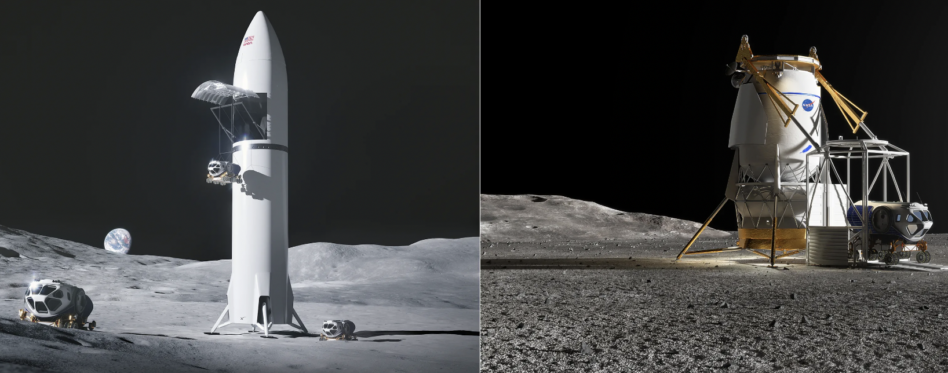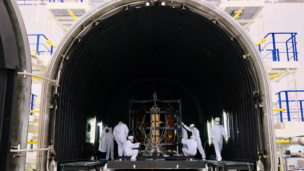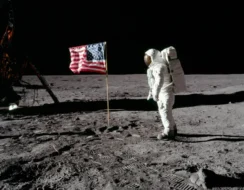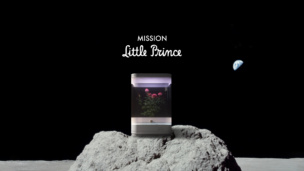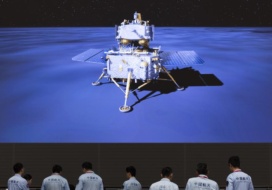NASA released new renderings and details of the SpaceX and Blue Origin cargo lunar landers as both companies work toward a preliminary design review.
Pack your bags: The agency tasked SpaceX and Blue Origin late last year with modifying the Human Landing System (HLS) vehicles, exercising an option through its existing contract.
- The cargo variant is slated to land on the Moon in 2032 with Artemis VII, six years after NASA’s planned crewed landing.
- NASA said the cargo variants will be able to land 12 to 15 metric tons of payload.
The primary modifications involve redesigning the interior without life support and engineering novel payload deployment mechanisms to transport cargo to the lunar floor, which can be seen in the new NASA rendering.
“It’s essential that NASA has the capability to land not just astronauts, but large pieces of equipment, such as pressurized rovers, on the Moon for maximum return on science and exploration activities,” said NASA HLS program manager Lisa Watson-Morgan.
On Apr. 3, NASA tapped Intuitive Machines, Lunar Outpost, and Venturi Astrolab to develop competing lunar terrain vehicles. The following week, Japanese PM Fumio Kishida signed an agreement for its space agency to construct a pressurized lunar buggy.
Checking in on Starship: SpaceX is ramping up its Starship flights, with the company indicating its fourth flight could launch as early as next month. In addition to continued progress with the broader launch system, SpaceX and NASA are working to build out the HLS vehicle architecture in Boca Chica, TX. Work includes human life support development, testing its astronaut elevator system, cryogenic boil-off prevention, and in-space propellant transfer.
Checking in on Blue Moon: Blue Origin’s Blue Moon Mark 2 HLS variant is further behind Starship HLS, having secured its contract only last year. However, the company said it is making progress on a smaller lunar cargo lander—the Blue Moon Mark 1—which it aims to launch next year. Mark 1 can transport three metric tons to the lunar surface, compared to the 12 to 15 metric tons of payload in the Mark 2 HLS cargo variant design.
